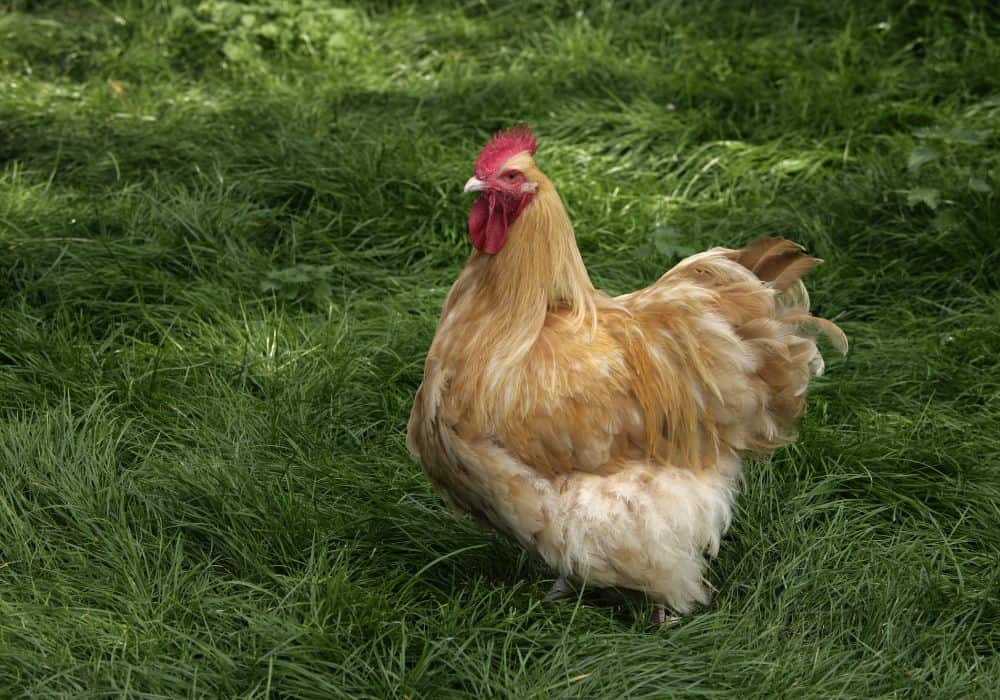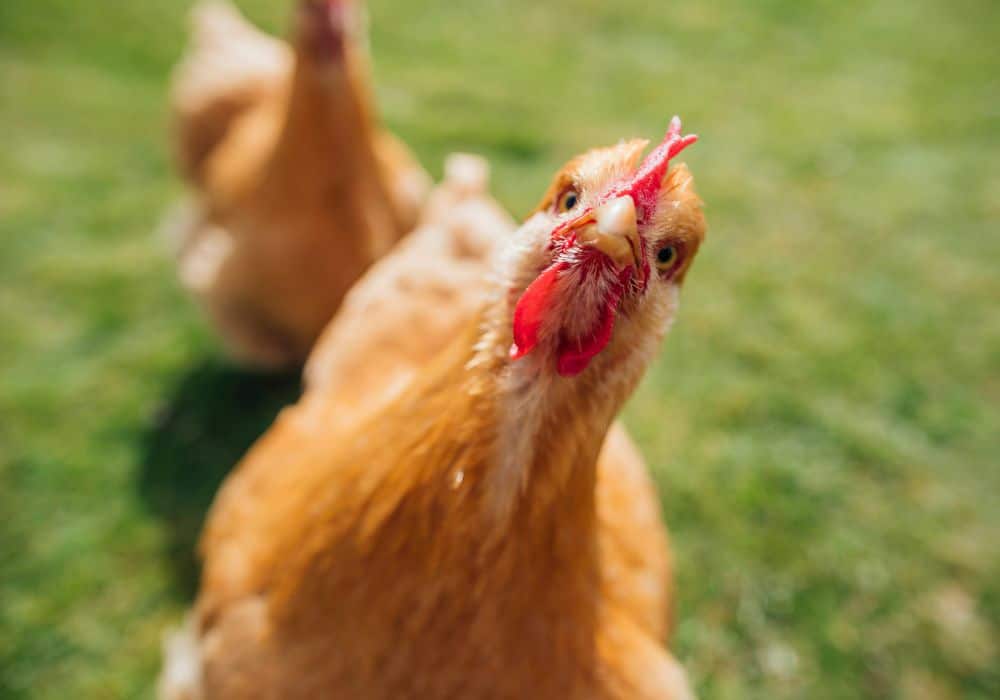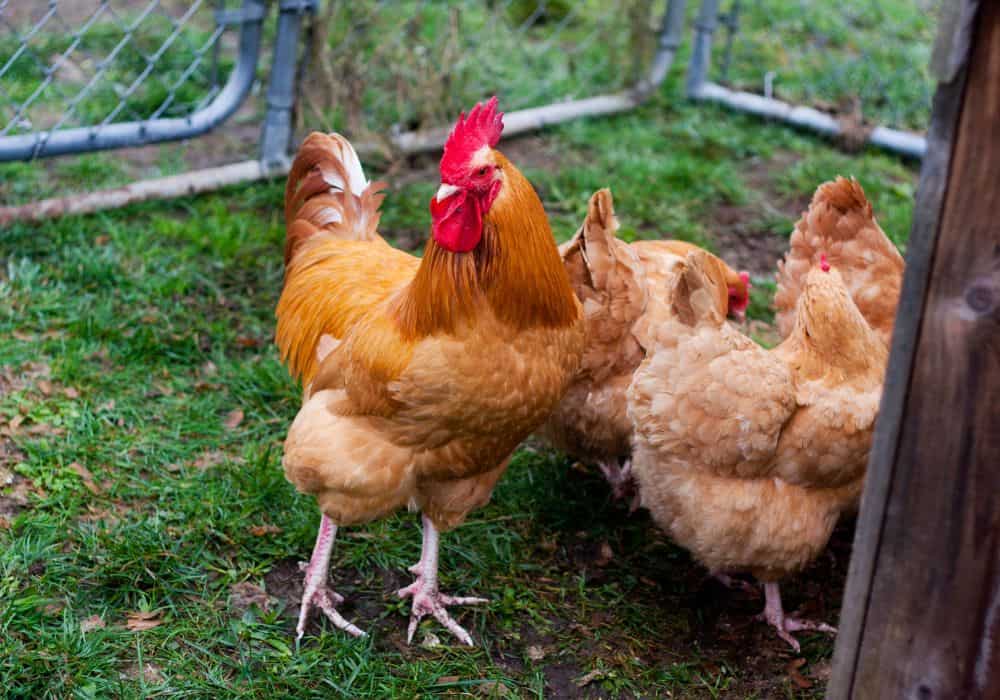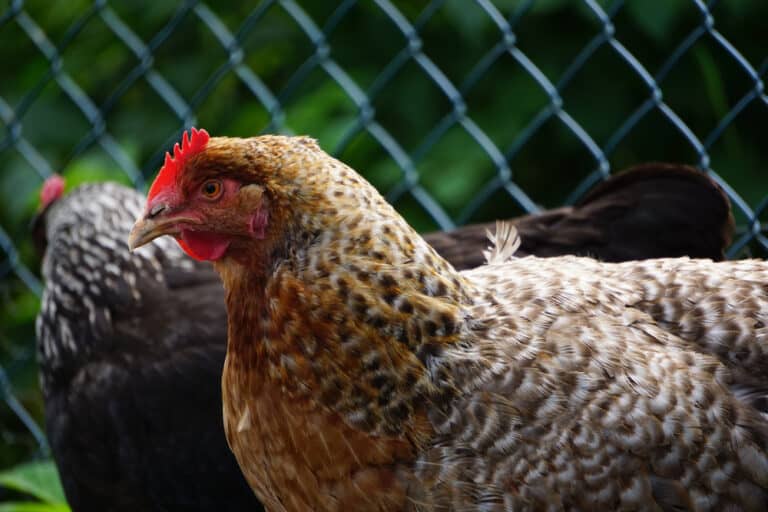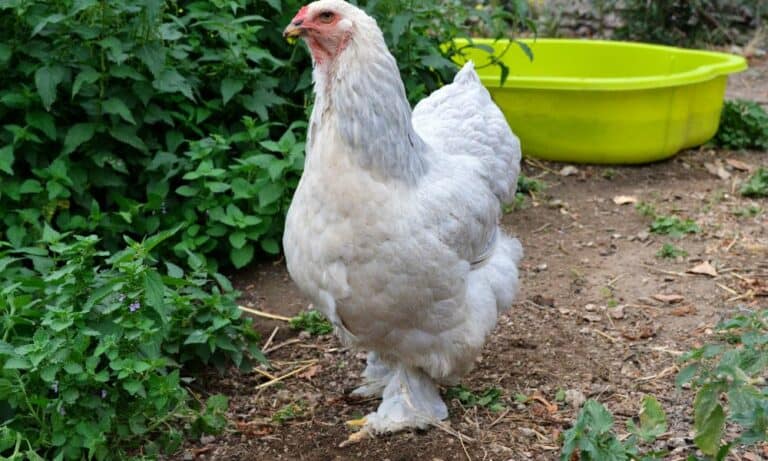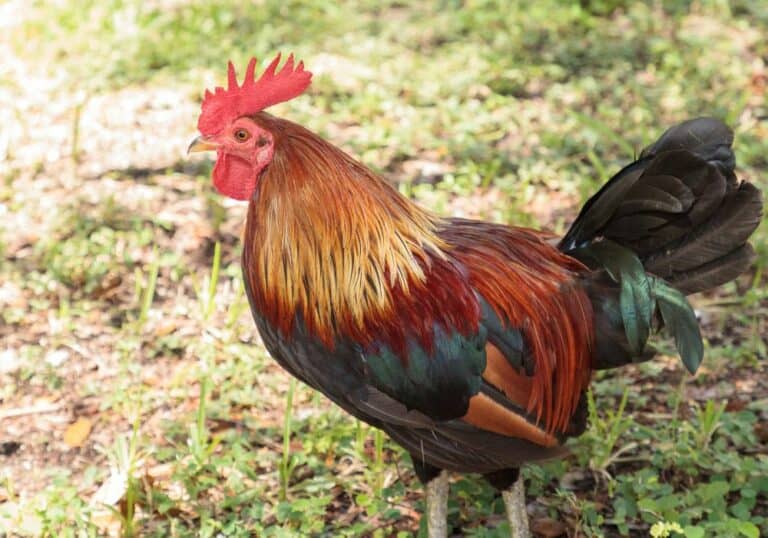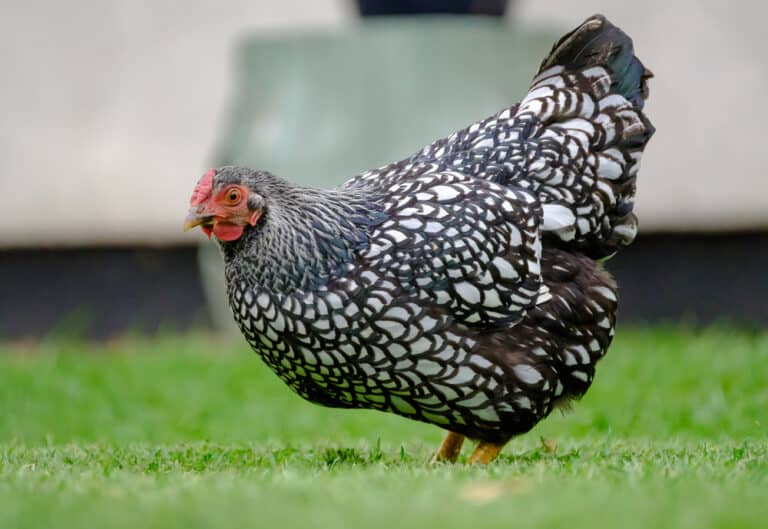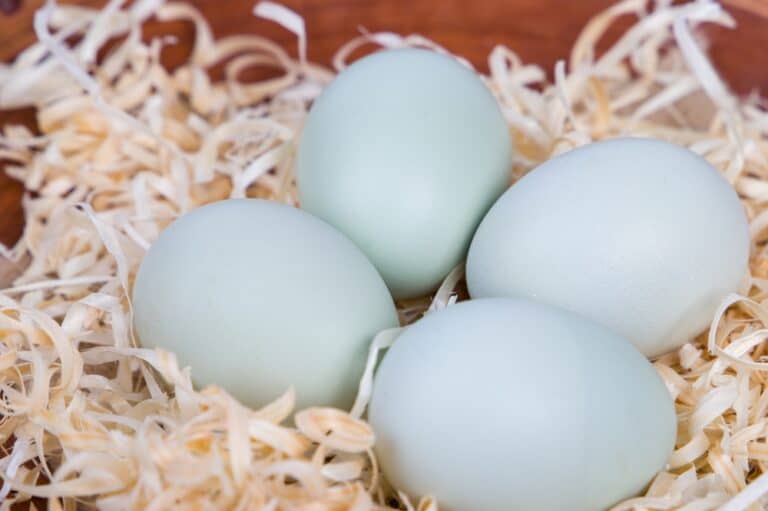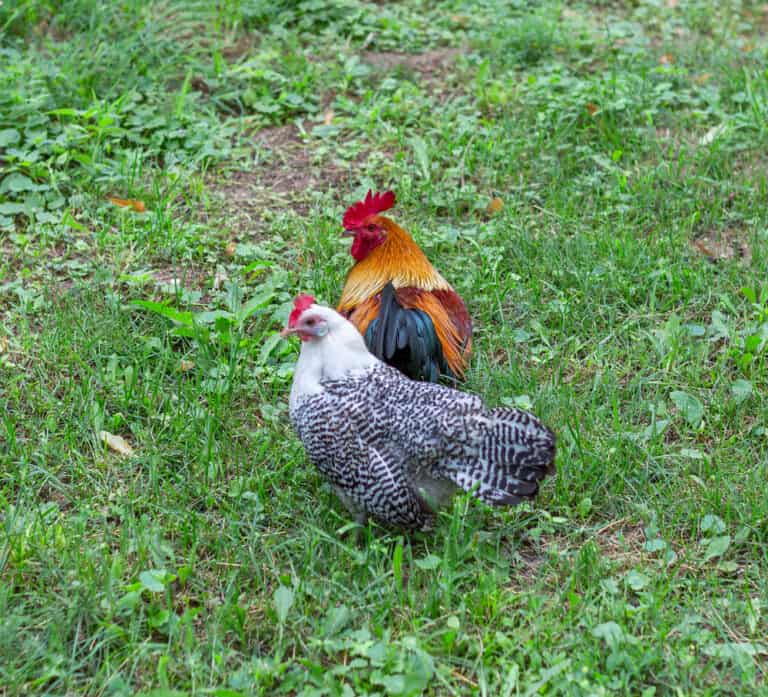It’s 2023, and there’s a certain growing interest in the care and keeping of chickens. More specifically, people are starting to grow increasingly interested in buying chickens that they can raise as their own. This is doubly true about heritage chicken breeds.
If you have been eyeing the chicken market, then you already may have heard of several breeds. One of the increasingly common breeds to buy is the Orpington chicken. This chicken comes in several variations, including the Buff Orpington.
Buff Orpingtons are the most common variation of Orpington chicken, but is this right for you? This guide will give you a deep dive into this breed and what it can mean for your flock.
What is an Orpington chicken?
Before we get into the specific variation of Orpington, let’s take a look at what Orpington chickens are like.
Orpington chickens are a breed hailing from England. These chickens are dual purpose birds that can be used for both egg production and meat. This heritage breed dates all the way back to the early 1800s during “Hen Fever.”
This was a brief period of time when breeders were developing a wide range of different chicken breeds. William Cook, a British farmer from Orpington in Kent, is credited with creating the first Orpingtons.
The birds were a great success and quickly found their way to the United States and other parts of Europe. For a while, they were extremely popular. By 1902, the American Poultry Association officially recognized them as a breed.
However, their popularity declined steeply after World War II when mass-produced hybrids became the more common option. Their numbers began to increase again. The breed is now listed as “in recovery.”
What breeds are Orpington chickens derived from?
It’s not entirely certain what specific breeds they were made from. However, it’s believed that they are derived from Minorca birds and other different breeds.
What is a Buff Orpington?
William Cook was a maverick when it came to breeding chickens, and he loved coming up with different patterns of plumage for his chicken breed. Orpingtons are famous for coming in a wide range of different colors.
You might see white Orpingtons, red Orpingtons, or even “Jubilee Orpingtons,” which were bred to have a chocolate brown color with white speckles throughout their feathers. Buff Orpingtons have a buff color.
For those not in the know, the term “buff” is a golden honey brown that is typically found in heritage chickens. Buff Orpingtons are the most common variation of Orpington chicken on the market right now—despite this not being the original Orpington color.
What does a Buff Orpington look like?
Buff Orpington are stout, stocky birds that have a full body with thick plumage. Their feathers are soft and fluffy, but lay close to the body and cover the tops of their legs. The buff color looks like a golden yellow-brown. Though they are fluffy, they still have smooth feathers.
Their beak tends to be short and yellow-pink. Their comb and ears are both well-defined and bright red. The standard eye color is amber color. They are white-skinned with medium-sized wattles and medium combs that are slightly rounded around the tips.
Like all other Orpington chickens, these birds can grow to a fairly large size. It’s not unusual for hens and roosters to grow to as large as 10 pounds when they are fully mature. Because they have a naturally broad body, they have a tendency towards obesity if poorly cared for.
What are Buff Orpingtons good for?
A better question is, what aren’t they good for? Orpington chickens are incredibly popular because they can do a little bit of everything. They are prolific egg layers that can produce large, tasty eggs.
Since they are large birds, they also can be used for meat. You can usually use Buff Orpington chickens as high-end broilers in their youth, but the truth is that most people prefer to let them age to adulthood due to the higher quantity of meat they can offer.
If you are looking for a pet, then this chicken breed can also be a good choice. They are notoriously friendly, docile, and gentle. In fact, they are a breed that’s pretty famous for wanting to be picked up and cuddled.
Let’s talk about raising Buff Orpingtons for meat.
Truth be told, the color of their feathers will not make a difference in their meat quality or meat production. An Orpington is an Orpington. They make good meat and they generally are good for this purpose.
If you are looking for a bird that can be processed quickly, Orpingtons are a good choice. You can turn them into meat within 16 to 20 weeks of their lifespan. The meat is described as juicy and flavorful, too.
Let’s talk about Buff Orpington egg laying.
Buff Orpingtons are just like any other Orpington hen in the sense that you can expect excellent egg-laying abilities. On average, you will get around 200 eggs per year, though egg production does slow down after their third year.
Orpingtons can lay large, juicy brown eggs throughout most of their lives. The top layers can produce as many as 280 eggs. Buff Orpington hens are incredibly popular for this purpose, and it’s absolutely a good investment for backyard chicken keepers that enjoy eggs.
Pullets typically start laying their eggs between five to seven months of age. While this is fairly common for chickens, Orpingtons are actually rare for their egg production and longevity. You can get more eggs for a longer period of time with an Orpington hen.
Are Buff Orpingtons good pets?
Buff Orpingtons are some of the sweetest, most attention-seeking birds you’ll ever meet. You are likely to find yourself with lap birds if you buy a flock of Orpingtons. They will follow you where you go, cluck at you, and just be pleasant.
Their docile nature makes them a great gift for a farm-curious kid. Your child will be able to bond with their bird, much like any other member of the family. If you are a beginner chicken keeper, then this is a great bird that will give you almost no grief.
Can Buff Orpingtons get broody?
Buff Orpingtons, much like all other chickens of the breed, occasionally get broody. Yes, it can happen. Sometimes, it can happen fairly frequently, but it all depends on the bird. This is a broody species.
They can get very broody. When they do have chicks, they tend to be somewhat poor sitters. Using an incubator can make sense with these birds, but if they are prone to broodiness you shouldn’t have a problem. They make great mothers.
Can you add Buff Orpingtons to a different flock?
If there was ever a problem with Orpington birds, it’s that they are actually too nice. It’s crazy to think about, but it’s true. Orpingtons are so docile, they often end up being the target of more aggressive breeds.
If you want to add an Orpington to your current mixed-breed coop, think twice before it happens. Many breeds, such as Rhode Island Reds, will peck and attack the gentle Orpington. Keep an eye on your Orpington to make sure that he or she isn’t being bullied!
How should you house an Orpington?
Orpingtons are fairly adaptable birds, but they still have needs. Orpingtons enjoy eating from a feeder and will happily peck away at whatever chicken feed you give them. However, they still like to free-range and require a little space.
Each bird should get at least 5 to 10 square feet of roaming space.
Do Orpington chickens do well in cold or hot climates?
Since they do very well in the cold, you don’t need to have a heater inside their coop in most cases. In bitter cold temperatures, their combs can get frostbite, so take care there. Ideally, you are going to house them in a temperate to cool climate.
Heat is a bigger issue for Orpington chickens. While they’re great in cold, hotter climates can be a bad match for them. They can overheat or even just get stressed from temperatures that are too warm for them.
If you live in a warmer climate, you should provide your flock with tons of shade and a steady supply of cold water. It’s the best way to prevent them from getting sick. They can die in high temperatures.
PRO TIP – Chickens of this breed tend to enjoy dust baths. So, if your area is a bit dusty, don’t panic. They’ll love that!
How should you feed a Buff Orpington chicken?
Orpington chickens are happy birds that love to eat, often to the point that they can get a little bit chunky. With that said, they are not the world’s best foragers. They cannot get enough food from just pecking around dirt like other birds can.
If you want to keep an Orpington chicken happy and healthy, you’ll keep a well-stocked feeder in a place that’s easy for them to reach. It’s best to think of bugs and other peckable items as a supplement rather than the main course for an Orpington chicken.
Orpington hens can also end up getting a little “drained” of nutrients as a result of their egg laying. This is particularly true about calcium. If you want to keep them healthy, make sure to have an oyster shell or two available to them.
Are Orpington chickens loud?
Many people tend to buy Orpington chickens as backyard chickens or pets, and part of this is because they’re not prone to making noise. They are quiet but tend to be talkative. It’s more of a “whisper” than a shout.
The only time you will really hear an Orpington chicken let out a loud squawk or scream is when there is a predator in the midst. (If your area is prone to coyotes or other predators, getting a tall fence is a smart move.)
Are Buff Orpington chickens healthy?
Yes! They are actually quite long-lived, especially for a breed that is so prolific in the egg department. A typical Orpington chicken will live for five to 10 years depending on their sex. Hens tend to die younger due to the impact of egg laying on their bodies.
Like most other chickens, you have to make sure that they remain clear of mites, lice, and worms. Spot treatments help with mites, while bi-annual medication can help with worms. Aside from that, you should be pretty much set.
How much do Orpington chickens cost?
Orpington chickens are still fairly unusual to find in the United States. If you go to a discount breeder, you will be able to get them for around $5 per live bird. Breeders that have a heavy emphasis on heritage and health can charge as much as $35 per pullet.
Bantams can be slightly less expensive, though it can be even harder to find a chicken breeder that has them. If you are willing to be patient, it’s well worth the chase. These birds are some of the most lovable on the market.
Despite the title suggesting that they are recovering, it’s worth noting that Orpington chickens are still fairly rare in the United States. Many beginners may mistake a Buff Orpington for a Plymouth Rock in buff color. Make sure you get a breeder that sells legit Orpingtons!
Conclusion
If you are wondering what chicken breed is right for you, an Orpington chicken is probably the right choice for you. You get the child-friendly pet you want, the egg you want, and even a good meat bird by choosing an Orpington.
Buff Orpingtons are the most common coloration of the Orpington breed. So, if you like the idea of a more traditional bird, then this is one coloration that you should seriously consider. Once you own one, you’ll want to buy a whole flock of them.

